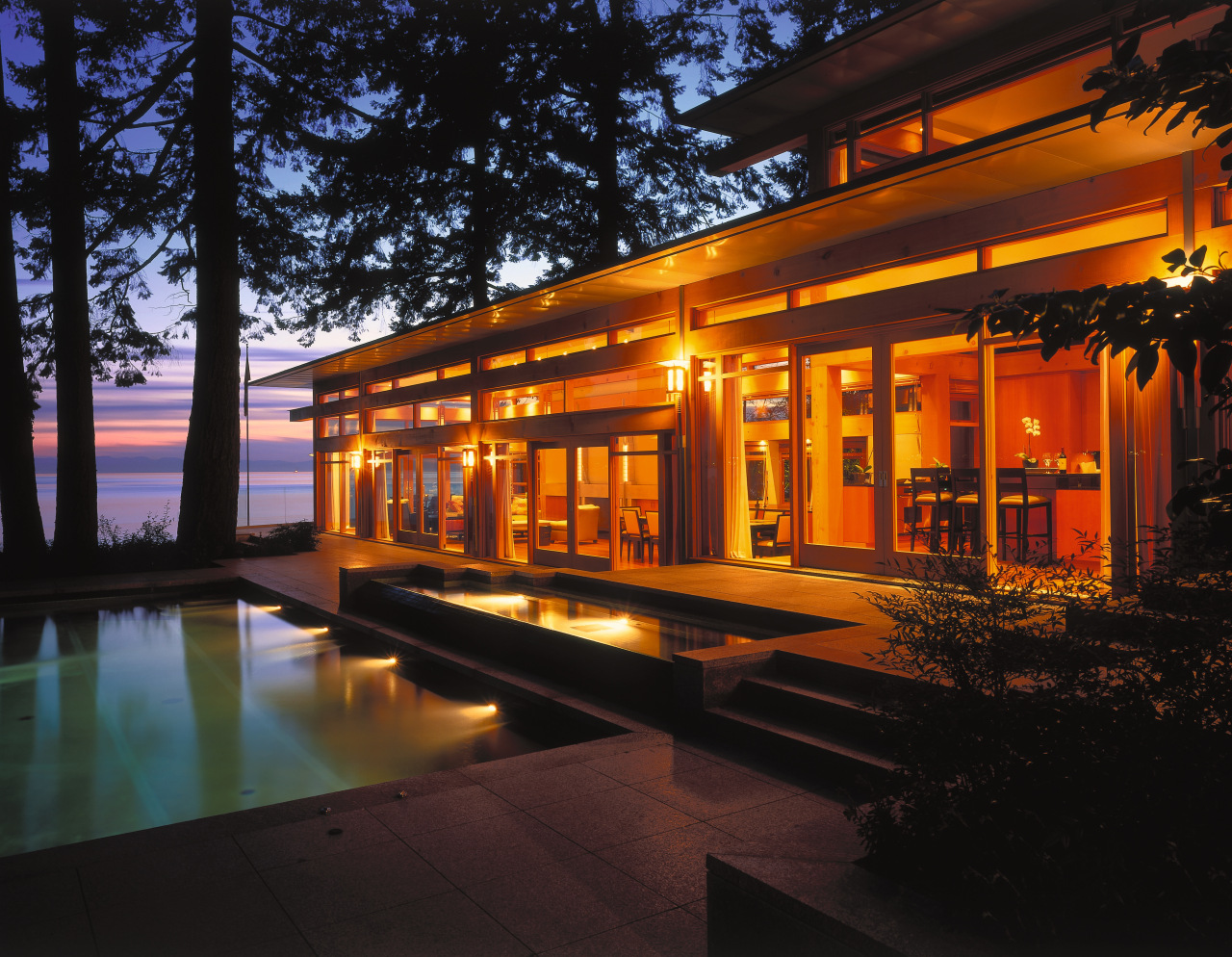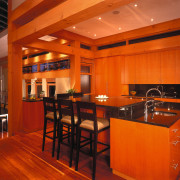Looking to the sea
This long, narrow home has a linear progression from its front path and entrance right through to a private and panoramic view of the sea
In a world of expanding populations and finite natural resources, waterfront properties have become an exclusive domain. With so much invested in a waterside location, maximising the views can go beyond the orientation of the home to the very structure of the residence.
This oceanside house, by architect Brian Hemingway, occupies a large site, yet has a relatively narrow toehold on the shoreline.
"The property's ocean frontage is around 21m wide, with the land stretching 76m back from this," says Hemingway. "This elongated shape recommended a long, narrow home, and I saw this as an opportunity to create a space that worked loosely as a metaphorical progression of life."
The home's core constitutes this pathway. From the front door, a single corridor follows a direct line through the interior to the sea. Passing stairways to other levels, progress moves forward, with solid walls on the left giving way to expanses of floor-to-ceiling glass. To the right, open alcoves contain the kitchen and living areas.
"Paralleling life's progress, the hubbub of daily living concerns is gradually passed by to reach the end of the journey a quiet, contemplative vision of nature," says Hemingway.
The home's post-and-beam structure is central to its connection with nature, avoiding the need for load-bearing walls. Instead the walls are in glass, with a timber exoskeleton.

"The Douglas fir beams and posts provide the essence of the home in several ways," says Hemingway. "The structure's simple form belies the care and craftsmanship required to achieve it."
An example of this is the make-up of the structure itself. Built in an earthquake zone, the connections between the posts and beams had to be steel reinforced. Instead of external bolts and steel plates, or even recessed bolts hidden behind wooden plugs, Hemingway created seamless joints, with all metalwork positioned inside specially designed apertures at the ends of the beams. These rigid, almost invisible joints were then cemented' by filling the connections with fibreglass.
"The hand-finished beams and posts also play an important aesthetic function," says Hemingway. "Their positioning forms a strong visual patterning, with millwork, window systems, flooring patterns, and even the custom lanterns adding to the sense of rhythm."
While the home's extensive glazing provides an obvious connection with the outdoors, the choice of locally sourced timber and stone provides another connection.
"Natural materials are used throughout the house," says Hemingway. "Granite, used for the entry to the home, was also sourced locally. This whole coastal area was originally the preserve of local indigenous people, and both the owners and myself felt it was important to retain a strong connection to the land."
Choice of materials also enhances the sense of progression through the home. At the entry, the granite wall provides a rugged introduction, with honed granite underfoot. Once inside, there is polished granite flooring, stepping down to American cherry flooring, where the kitchen and other domestic spaces commence. The focus on natural surfaces is maintained in the communal spaces, with fire surrounds in limestone, and the kitchen cabinetry finished in Douglas fir veneer.
The home's strong conceptual element is accompanied by an intelligent, practical layout. For example, a paddling pool lies a few short steps across the corridor from the kitchen, enabling the owner to keep a close parental eye on proceedings.
Bedrooms and other private areas, such as a gym, are positioned away from the central architectural flow. Inside the front door, a wing housing the master bedroom and study leads off to the left. Stairs off to the right lead up to children's bedrooms, and downstairs to the gym, a billiards room, and even a ballet practice room.
All of the ground floor rooms have extensive floor-to-ceiling glazing.
"In a sense, the entire house is like a giant Japanese lantern," says Hemingway. "At night, with the curtains pulled back, the fretwork of the window systems and the structural beams cast a lattice of shadow and light providing a welcoming sight from its surroundings."
Credit list
Interior designer
Cladding
Paints
Home theatre
Countertops and splashback
Oven, gas cooktop, ventilation
Refrigerator
Outdoor paving
Story by: Trendsideas
Home kitchen bathroom commercial design
Classic looks, contemporary efficiency
Personality plus
Diving into nature














